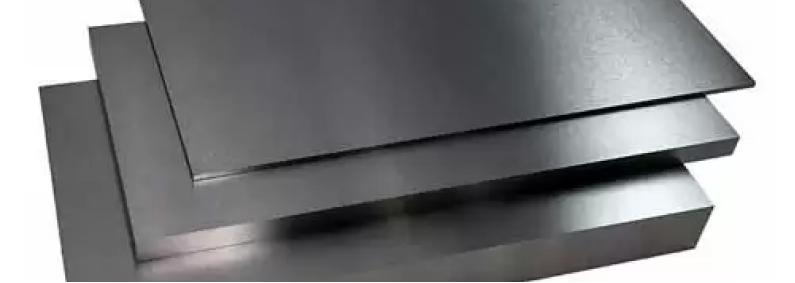Hastelloy Sheets and Plates

Hastelloy Sheets and Plates are high-performance alloy materials made from a nickel-based superalloy, primarily composed of nickel, molybdenum, and chromium, known for their outstanding resistance to corrosion and high-temperature strength. Hastelloy is one of the most resistant alloys to a wide range of chemicals, including acids, and is used in extreme environments like chemical processing, aerospace, and power generation.
Key Properties of Hastelloy Sheets and Plates
- Corrosion Resistance: Hastelloy offers exceptional resistance to a wide range of corrosive environments, including hydrochloric acid, sulfuric acid, and chlorides. This property makes it ideal for applications where other materials would degrade quickly.
- High-Temperature Strength: Hastelloy remains strong and stable at high temperatures, with excellent resistance to oxidation and thermal fatigue. It can withstand extreme temperature fluctuations without compromising structural integrity.
- Durability and Toughness: The alloy is known for its durability, toughness, and ability to maintain its mechanical properties under extreme conditions, making it suitable for industries that require high-stress, high-performance materials.
- Weldability: Hastelloy sheets and plates are highly weldable, allowing for easy fabrication and adaptation to complex structures and components.
- Non-Magnetic: Hastelloy is non-magnetic, which makes it ideal for applications where magnetic interference is undesirable.
Applications of Hastelloy Sheets and Plates
Hastelloy Sheets and Plates are commonly used in industries that demand high resistance to corrosion, temperature extremes, and stress. Some of the most common applications include:
- Chemical Processing: Due to its excellent resistance to a wide range of chemicals, Hastelloy is commonly used in reactors, heat exchangers, tanks, and piping systems in chemical processing industries.
- Aerospace and Defense: Hastelloy’s high strength and heat resistance make it suitable for aerospace components that are exposed to extreme temperatures, such as turbine blades, combustion chambers, and other high-performance parts.
- Power Generation: Hastelloy is used in components that operate in high-pressure and high-temperature environments, such as power plant heat exchangers, nuclear reactors, and combustion systems.
- Marine and Oil & Gas: The alloy’s resistance to seawater corrosion makes it ideal for marine equipment, and its toughness allows it to perform well in offshore oil and gas applications.
- Pharmaceuticals: Hastelloy is used in pharmaceutical manufacturing equipment, where resistance to corrosion is critical for maintaining the purity and quality of products.
Advantages of Hastelloy Sheets and Plates
- Superior Corrosion Resistance: Hastelloy stands out for its ability to resist corrosion in aggressive chemical environments, making it invaluable in industries like chemical processing and marine applications.
- High Strength at Elevated Temperatures: This alloy’s ability to withstand high temperatures without losing its mechanical properties makes it an excellent choice for use in high-temperature processes, such as in the aerospace and power industries.
- Ease of Fabrication: Hastelloy sheets and plates are easily fabricated and welded, enabling them to be formed into complex shapes and structures for a wide range of applications.
- Extended Lifespan: The alloy’s durability and resistance to wear ensure long-lasting performance even in harsh environments, reducing the need for frequent replacements and maintenance.
- Non-Magnetic: The non-magnetic properties of Hastelloy make it useful in sensitive applications where magnetic interference could pose a problem.
Grades of Hastelloy Sheets and Plates
- Hastelloy C-276 (UNS N10276): One of the most widely used grades, known for its excellent resistance to a variety of corrosive environments, including sulfuric acid, hydrochloric acid, and chlorine.
- Hastelloy C-22 (UNS N06022): Provides superior resistance to both oxidizing and reducing environments and is ideal for industries that face extreme corrosion challenges, such as in nuclear and chemical processing.
- Hastelloy B-3 (UNS N10675): Known for its exceptional resistance to hydrochloric acid, Hastelloy B-3 is widely used in chemical processing applications.
- Hastelloy X (UNS N06002): This grade is excellent for high-temperature applications, such as in aerospace and gas turbines, due to its strength and resistance to oxidation at elevated temperatures.
Surface Finishes for Hastelloy Sheets and Plates
- Hot Rolled Finish: Hot rolling results in a rough surface, which is ideal for structural and industrial applications where strength is more critical than appearance.
- Cold Rolled Finish: Cold rolling provides a smooth surface with better dimensional accuracy, often used for precision applications in industries requiring tight tolerances.
- Polished Finish: A polished finish offers an attractive, smooth surface that is often used in decorative or high-end applications, where aesthetics matter.
- Pickled and Passivated Finish: This finish improves the corrosion resistance of Hastelloy, especially in environments where the material will be exposed to highly corrosive substances.
FAQs
Hastelloy offers unparalleled resistance to corrosion in aggressive chemical environments, including sulfuric and hydrochloric acids, making it ideal for reactors, tanks, and piping systems in chemical processing.
Hastelloy maintains its mechanical strength and resists oxidation and thermal fatigue at high temperatures, making it an excellent material choice for aerospace, power generation, and industrial applications that involve high heat.
Yes, Hastelloy is highly weldable and can be joined using conventional welding methods. The alloy’s weldability makes it suitable for fabrication into complex parts and structures.

Products
Industry We Serve
- Oil & Gas industries
- Chemical process industries
- Pump and valve in high pressure component
- Food industries
- Pulp and paper industry
- Aerospace industry
- Power plant
- Mechanical component
- Sugar industry
- Cement industry
